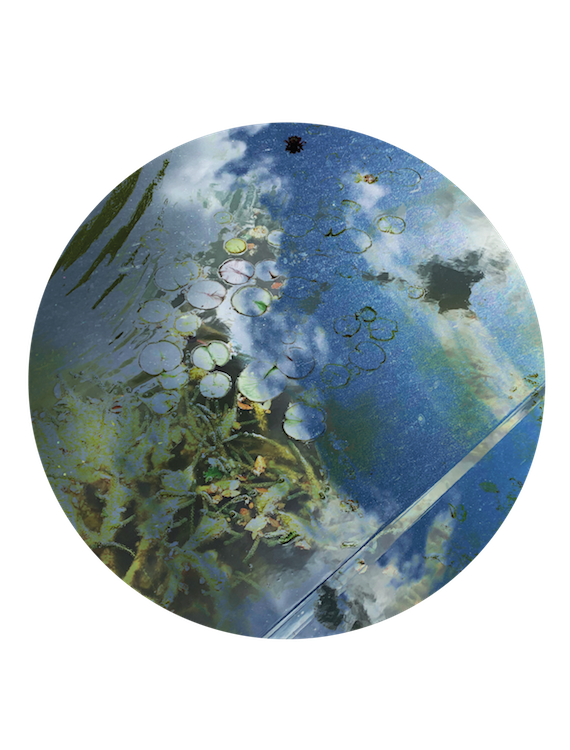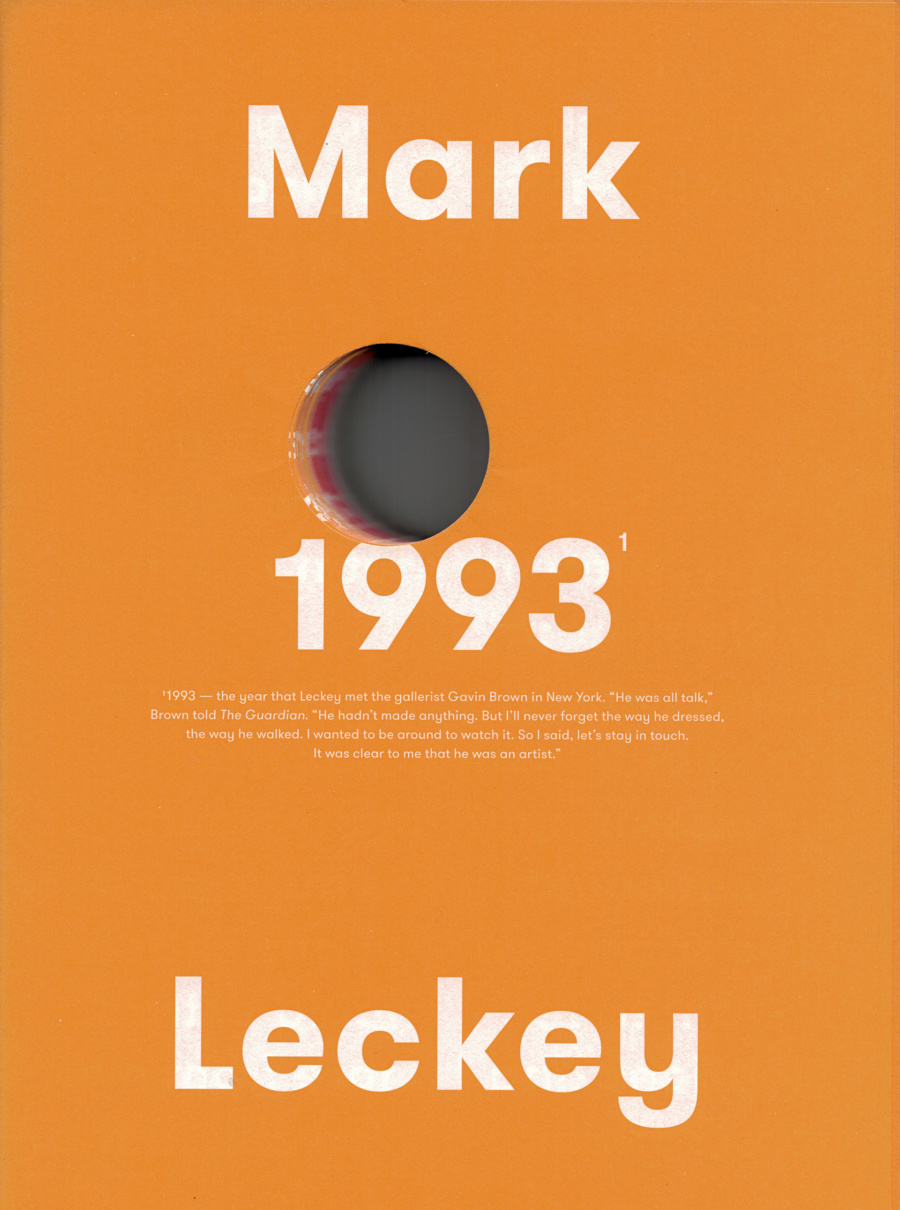Items: Is Fashion Modern?
1.06.19 | Article by Phillipa Snow | fashion, interview | MM13 Click to buy
Paola Antonelli, the Senior Curator of MoMA’s Department of Architecture and Design, on the tyranny of the Fitbit, Rei Kawakubo’s monster maternity wear, and MoMA’s very first fashion exhibition in more than seven decades.

PS:
This is the first fashion-related show you’ve done at the MoMA in 73 years; so what was it about this particular moment that made you feel that the time was right?
PA:
Well, things at MoMA take a few years to come to fruition! Actually, I have to say that it’s something that I’ve been thinking about for more than a decade — not really the exhibition itself, but more the idea that there should be fashion in the design collection at MoMA, and in the design program at MoMA. If the image of design that MoMA has pursued for so many decades deals with the suggestion that people have to have high quality design in their lives, then fashion should be a part of it. This is something that I realised when I came to MoMA 23 years ago — that there was no fashion in the collection, except for one Fortuny dress. I started keeping a list in my drawer that was called Garments That Changed the World, and the Director of MoMa [Glenn Lowry] knew about this list. So he’s the one that actually had the idea for an exhibition.
PS:
I suppose the reason I ask is because there’s always this intrinsic cultural link between fashion as a design discipline, and women in particular — and I think sometimes that leads to its being treated as a poor relation.
“In terms of self-expression, Fashion is so tremendously important.”
PA:
I agree with you. I think it has to do with a certain patriarchal structure that has existed — and kind of still exists — in academia, and in many cultural institutions.
PS:
Something analogous might be the fact that the Design Museum here in London has an exhibition about the history of the Ferrari, which is being taken seriously even though it might be argued to be the ‘male’ counterpart of an exhibition on fashion design: it’s a supposedly gendered area of interest, but it ultimately affects something that’s a part of our everyday lives
PA:
and I think that fashion influences people’s lives more than cars! And you can still be influenced by fashion if you’ve never owned, or never seen a car. In terms of self-expression, fashion is so tremendously important.
PS:
When you were choosing the actual items that appear in the show, what was that process like? Were you surveying people for answers, or —?
PA:
You actually don’t need to survey people too much: if you sat down now for two hours with a pen and paper, for instance, I think you would get to 500 items very easily just based on your own experience. Of course, what is important is to set certain parameters. We can travel to kingdom come, and still not completely be citizens of the world; we are formed by the places where we grew up, where our tastes developed. I decided to make the exhibition focused on New York, because New York is where the curatorial team and I reside, even though most of us come from all over the world, except for one true-blood New Yorker — and also because it is kind of a privilege. It’s an observatory from which you can have a wide-ranging view of experiences. So once you set those parameters, you also set criteria; for instance, we wanted to choose design examples, not art examples: so we didn’t want to have Schiaparelli’s lobster, which is a beautiful example, but which hasn’t had as much impact on the world in general as, say, a pair of 501 jeans or a bucket hat.
And I knew I wanted 111. So once you do that, I can tell you that if you were to choose, you would probably overlap with our list by about 85%, easily. And that 15% would then be more idiosyncratic. Now, if you were Nigerian, or if you were Indian, maybe the distinction would be 70/30; but our culture is such that when it comes to garments, there are some garments that are truly universal. Not only the 501s and the white t-shirt, but the bucket hat — I was very surprised to see how universal the bucket hat is, actually!
PS:
Thinking about the title of the exhibition which you used as a springboard from 1944, which was Is Clothing Modern? — you’ve updated the title to reference “Fashion.” What’s the distinction?
“We can travel to kingdom come, and still not completely be citizens of the world; we are formed by the places where we grew up, where our tastes developed.”
PA:
The distinction is to do with the fact that today, we’re talking in much more systemic terms: or at least, we should be. Also, it’s because I wanted to make sure that people understood that clothes might be irrational, and not modern, but that they are not really the issue; it’s the whole cycle of fashion that holds our attention. So clothes and garments and fashion in this exhibition are prompts, and foils, and springboards for us to think about supply chains, and environmental concerns, and work practices — and aesthetics, stylistic issues, politics. They become a representation of the fact that everything is systemic. Just yesterday, we had a great one-day symposium on the exhibition in which we did exactly that – we started the day discussing raw materials, and we ended with an Oxford-style debate where the motion was “we should stop buying clothes.” Because we wanted to address the life-cycle of the fashion system; and make people realise that if you stop buying clothes, you might have a positive impact on one particular aspect of the industry, but you might have a negative impact on another.

Adopted from Vogue UK, March 2000; Vogue US, September 1998 and Vogue Paris. March 2017
PS:
And I do think that there’s been more interest in the political aspects of fashion in recent years — whether that’s because it’s seen as a women’s interest, and women’s issues are being taken more seriously, I don’t know. I don’t remember seeing people talk about cultural appropriation as much five years ago, for instance.
PA:
There are several items in the show that are paired with discussion about cultural appropriation: one in particular being the “doorknocker” earring, meaning the gold hoop earrings that have become such a part of Chola culture — so, Mexican-American culture in Los Angeles and California — and also African-American culture here on the East Coast, and in New York. You might have also seen those earrings used in Sex and the City by Sarah Jessica Parker, and that was certainly a moment of appropriation that is considered to be a perfect example of the issue.
Then there is the problem of the knock-off, and of mash-up culture — we’re trying to address some of these issues by including wall texts that put forward not only our position, but also other New Yorkers’ positions. All over the show, there are moments that could be controversial, and that definitely will make people think; there is the juxtaposition of a bikini and a burkini, for example. There is a platform where you have Capri pants, and the salwar kameez, because they represent two different moments in which women streamlined their clothes — much to the outrage of some parts of their cultures. Then of course there are more overt political moments like the hoodie, or the jerseys. I don’t know how familiar you are with the controversy around Colin Kaepernick here at the moment?
PS:
Absolutely, I’m familiar with it.
PA:
We selected that jersey a year ago, and he was already taking the knee at that time, so we certainly could not foresee that things would explode again. But in a way — and we stand by our choice, and it’s been fantastic that there has been so much attention — it has put the other jerseys, which are equally political, into shadow a little bit. For instance, with the female rugby team The Black Ferns from New Zealand, you can see how women’s jerseys do not really have the number, do not really have the name; and there’s much less attention given to women’s sports. We could go on forever: the exhibition is all this multilayered, so you can come in and say, oh, I have this, I have that, and you leave thinking more of your garments. It’s a case of peeling the onion.
Read more in Modern Matter issue 13, The Anti Issue.



